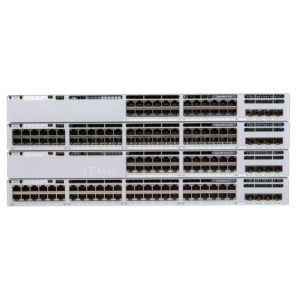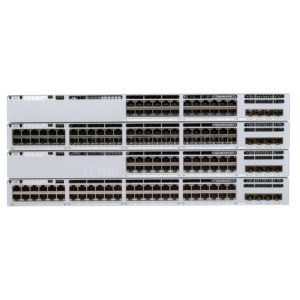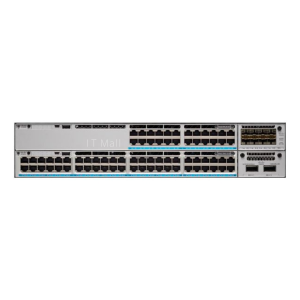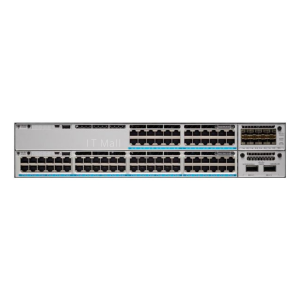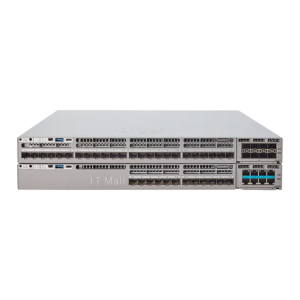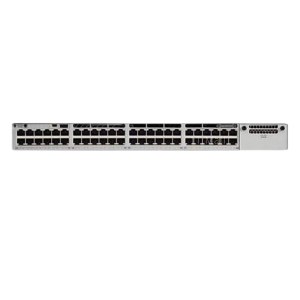Catalyst 9000 Switches FAQs
Catalyst 9000 Switches FAQs #
Catalyst 9000 Switches FAQs Explaining the most questions and answers about Catalyst 9200 that help get the details about Catalyst 9200
Question: What are Catalyst 9000 switches?
Answer: Catalyst 9000 switches, including the Catalyst 9000X models, are designed for flexible operations, secure networking, and exceptional speed and scale. They serve as the foundation for intent-based networking, supporting hybrid work environments, diverse endpoints, and distributed applications. Features include 400G enterprise support, Silicon One™ ASICs for campus, mGig and PoE ports, converged switching and routing, and continuous Zero-Trust security. These switches enable hybrid workspace transformation, advanced AI/ML-driven security, and future-proofed designs for smarter IT operations. They support full programmability, wired and wireless convergence, high availability, and advanced security features.
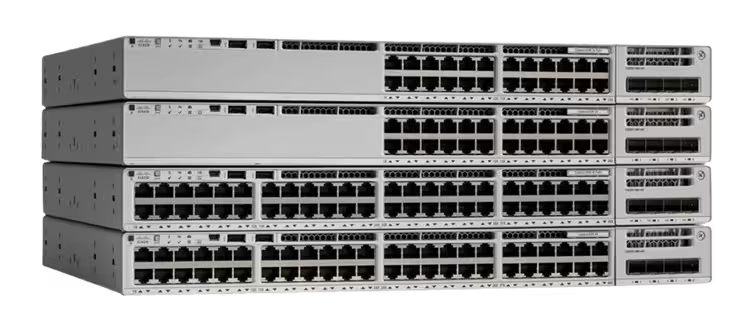
Question: What are Catalyst 9200 Series Switches?
Answer: Catalyst 9200 Series switches are designed for simple branch deployments, offering secure, reliable, and straightforward IT operations. They feature PoE+, modular and fixed uplink options, redundant fans and power supplies, and support cloud monitoring. Options include mGig, UPOE, and HVDC power supplies. These switches provide secure and efficient solutions for smaller networks.
Question: What are Catalyst 9300 Series Switches?
Answer: Catalyst 9300 Series switches are stackable fixed access-layer switches designed for high-performance networks. They feature high-density 10G mGig, 90W UPOE+ per port, and 100G uplinks, with up to 1Tbps of mixed stacking. The 9300X models enhance hybrid work, smart building integration, and branch networking. They support application hosting, advanced routing, and security features such as MACsec-256 and ThousandEyes integration.
Question: What are Catalyst 9400 Series Switches?
Answer: Catalyst 9400 Series switches are modular access and aggregation switches offering up to 9 Tbps system bandwidth and features like NSF/SSO, ISSU, and modular power supplies. These switches support up to 480Gbps per slot with options for 100G/40G uplinks, mGig ports, and UPOE+. They are ideal for scalable and resilient enterprise deployments.
Question: What are Catalyst 9500 Series Switches?
Answer: Catalyst 9500 Series switches are fixed-core and aggregation-layer switches designed for hybrid work environments. They feature Silicon One ASICs, 400G/200G uplinks, advanced routing capabilities, SD-Access integration, and high-availability features like patching and NSF/SSO. These switches are optimized for high-performance enterprise core networks.
Question: What are Catalyst 9600 Series Switches?
Answer: Catalyst 9600 Series switches are modular switches offering 400G Ethernet capabilities for enterprise campuses. Featuring Silicon One ASICs and advanced routing services, they provide high scale, low latency, and enhanced security without performance trade-offs. These switches are designed for the enterprise campus core with modular line cards and backward compatibility.
Question: What is the maximum number of VRF instances supported on Catalyst 9000 switches? Answer: The maximum number of VRFs is 256 for Catalyst 9300, 9400, and 9500 (C9500-16X/40X, C9500-12Q/24Q). Catalyst 9200 supports 4 VRFs for modular models and 1 VRF for fixed models. Catalyst 9400 (C9400X-SUP-2/2XL), 9500 (C9500-24Y4C/48Y4C, C9500-32QC/32C), and 9600 Series support up to 1K VRFs.
Question: What management capabilities are available for Catalyst 9000 switches?
Answer: Management options include IOS XE CLI, Prime Infrastructure, Catalyst Center, Meraki Dashboard, onboard WebUI, SNMP, and NETCONF/RESTconf/YANG. These switches integrate with Catalyst Center and SD-Access for centralized management.
Question: What programmability capabilities are available on Catalyst 9000 switches?
Answer: Catalyst 9000 switches enable network automation with model-driven APIs (NETCONF/RESTconf), Python scripting, streaming telemetry, and Docker application hosting. They support Plug-and-Play provisioning, ISSU, and configuration management tools.
Question: What is the purpose of the blue beacon LED on Catalyst 9000 switches?
Answer: The blue beacon LED simplifies chassis identification in rack-mounted setups. A remote administrator can enable the LED to blink for easy identification, and the local operator can press the mode button to acknowledge.
Question: What wireless support is provided with Catalyst 9000 switches?
Answer: Catalyst 9000 switches support wireless integration in SD-Access architecture, connecting access points and providing segmentation, guest traffic termination, and security policies. They are compatible with Catalyst 9800 Wireless Controllers for cloud or appliance-based management.
Question: What is the rationale for future downlink speeds converging on 5 to 10 Gbps?
Answer: Cat5e cabling supports up to 5-10 Gbps with NBASE-T technology. Wi-Fi 6/6E access points, compute, storage, and next-gen NICs require these speeds, making 2.5 Gbps a transitional technology.
Question: What are solutions for 5 Gbps connections to endpoints?
Answer: Catalyst 9300 Series stackable switches and Catalyst 9400/9600 modular line cards with multigigabit interfaces for 10G/5G/2.5G/1G speeds.
Question: What are Ecolabels, and why are they important?
Answer: Ecolabels identify environmentally preferable products. ENERGY STAR-certified Catalyst 9200 and 9300 Series switches showcase energy efficiency, reducing greenhouse gas emissions and energy costs. Certifications like EPEAT and ENERGY STAR highlight a commitment to sustainability.
Question: Can Catalyst 9200 switches stack with Catalyst 2960-X/XR switches?
Answer: No, stacking is not supported due to differences in CPU architecture and scaling capabilities.
Question: Can Catalyst 9300 switches stack with Catalyst 3850 switches?
Answer: No, these platforms do not support stacking due to differences in feature packaging and scaling.
Question: What are the application hosting capabilities of Catalyst 9300 switches?
Answer: Catalyst 9300 switches support native Docker application hosting with dedicated memory and CPU resources, enabling ASAc firewalls, ThousandEyes agents, and Spaces.
Question: What are the SSD storage options for Catalyst 9400 switches?
Answer: Catalyst 9400 supervisors support SSDs in 240GB, 480GB, and 960GB configurations for application hosting and storage.
Question: Do Catalyst 9500 Series switches support redundant power supplies?
Answer: Yes, Catalyst 9500 switches feature dual AC power supplies with front-to-back or back-to-front airflow options for redundancy and flexibility.
Question: What uplink options are available for Catalyst 9400 switches?
Answer: Catalyst 9400 switches offer uplink combinations for 100G/40G/25G/10G Ethernet, ensuring investment protection and flexible deployment options.
Question: What is the default power supply mode for Catalyst 9400 switches?
Answer: The default mode is combined mode. Users can switch to N+N or N+1 redundancy modes via CLI commands.
Question: What management options are available for ASAc hosted on Catalyst 9300 switches?
Answer: Management options include Catalyst Center for large deployments, CLI/RESTCONF for smaller deployments, and ASDM for policy management. High Availability (HA) is supported within a Catalyst 9300 stack, offering stateless switchover.
Question: What features are supported on ASAc hosted on Catalyst 9300 switches?
Answer: ASAc supports IPsec VPNs, SGACLs, and advanced security features. It offers up to 900 Mbps throughput on C9300X models with 4 vCPUs and 8GB RAM.
Product Related
-
Product on saleC9300L-48UXG-2Q-EListPrice:
$17,363.39OurPrice: $4,688.12 -
Product on saleC9300L-48UXG-2Q-AListPrice:
$17,363.39OurPrice: $5,556.28 -
Product on saleC9300L-48UXG-4X-EListPrice:
$16,121.21OurPrice: $4,352.73 -
Product on saleC9300L-48UXG-4X-AListPrice:
$16,121.21OurPrice: $5,158.79 -
Product on saleC9300L-24UXG-2Q-EListPrice:
$11,352.48OurPrice: $3,065.17 -
Product on saleC9300L-24UXG-2Q-AListPrice:
$11,352.48OurPrice: $3,632.79 -
Product on saleC9300L-24UXG-4X-EListPrice:
$10,110.30OurPrice: $2,729.78 -
Product on saleC9300L-24UXG-4X-AListPrice:
$10,110.30OurPrice: $3,235.30 -
Product on saleC9300L-48PF-4X-EListPrice:
$12,271.05OurPrice: $3,313.18
Refer from www.cisco.com

